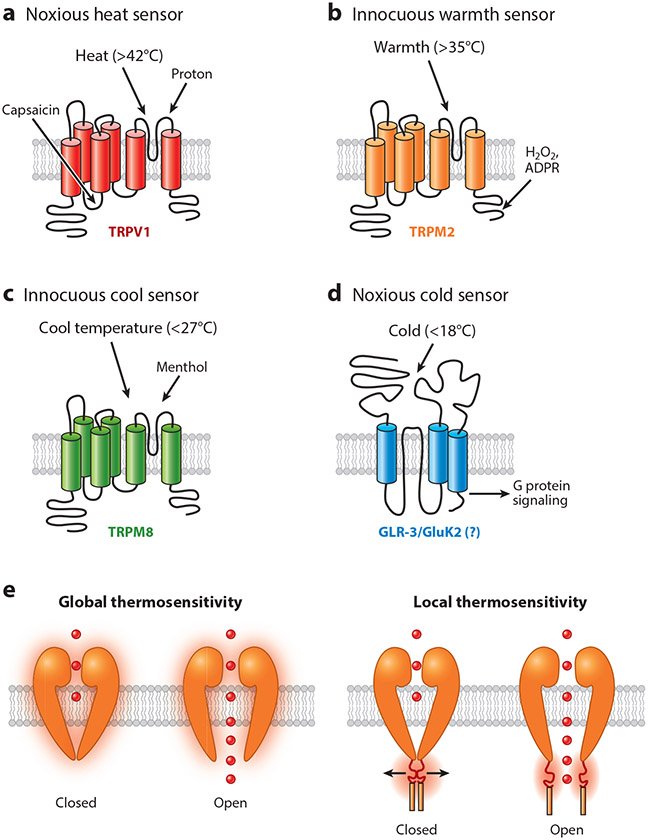Figure 1.
Molecular thermosensors involved in temperature sensation. (a) Shown is the representative noxious heat sensor TRPV1,which can be regulated by multiple environmental and endogenous stimuli, including heat (>42°C), proton, and capsaicin. (b) TRPM2 plays an important role in sensing innocuous warmth (>35°C). (c) Mammalian TRPM8 is the best-studied innocuous cool sensor (<27°C). (d) The ionotropic glutamate receptor GLR-3/GluK2 might act as a noxious cold receptor in both C. elegans and mammals (< 18°C). Notably, GLR-3/GluK2 is a metabotropic cold receptor (G protein signaling mediates its role in cold sensation), and the cold sensitivity of GLR-3/GluK2 is independent of its channel activity. (e) Molecular thermosensors may use both global conformation and local motif mechanisms to respond to temperature changes. Abbreviation: ADPR, adenosine diphosphate ribose.

